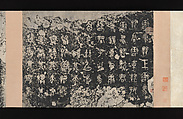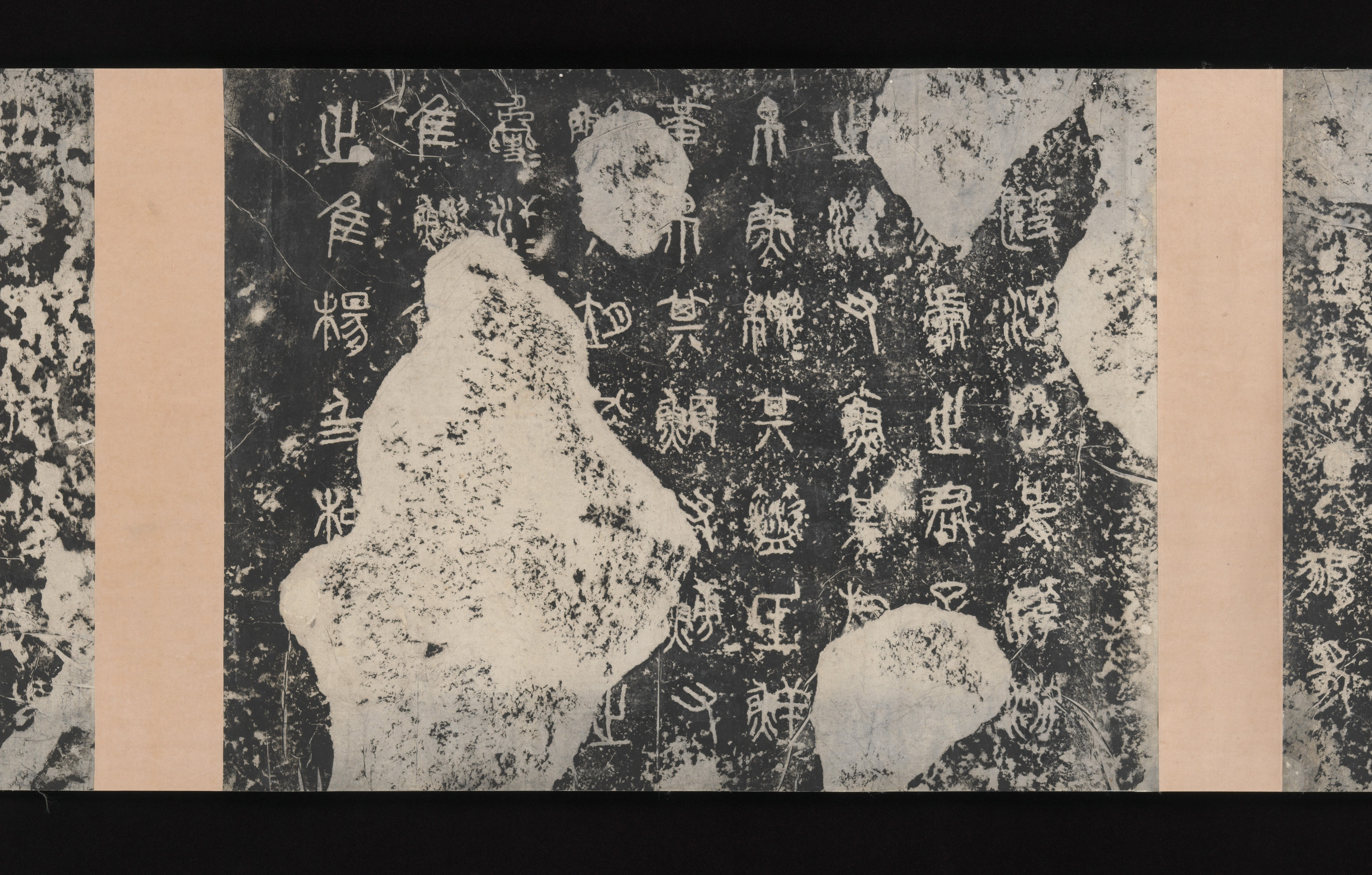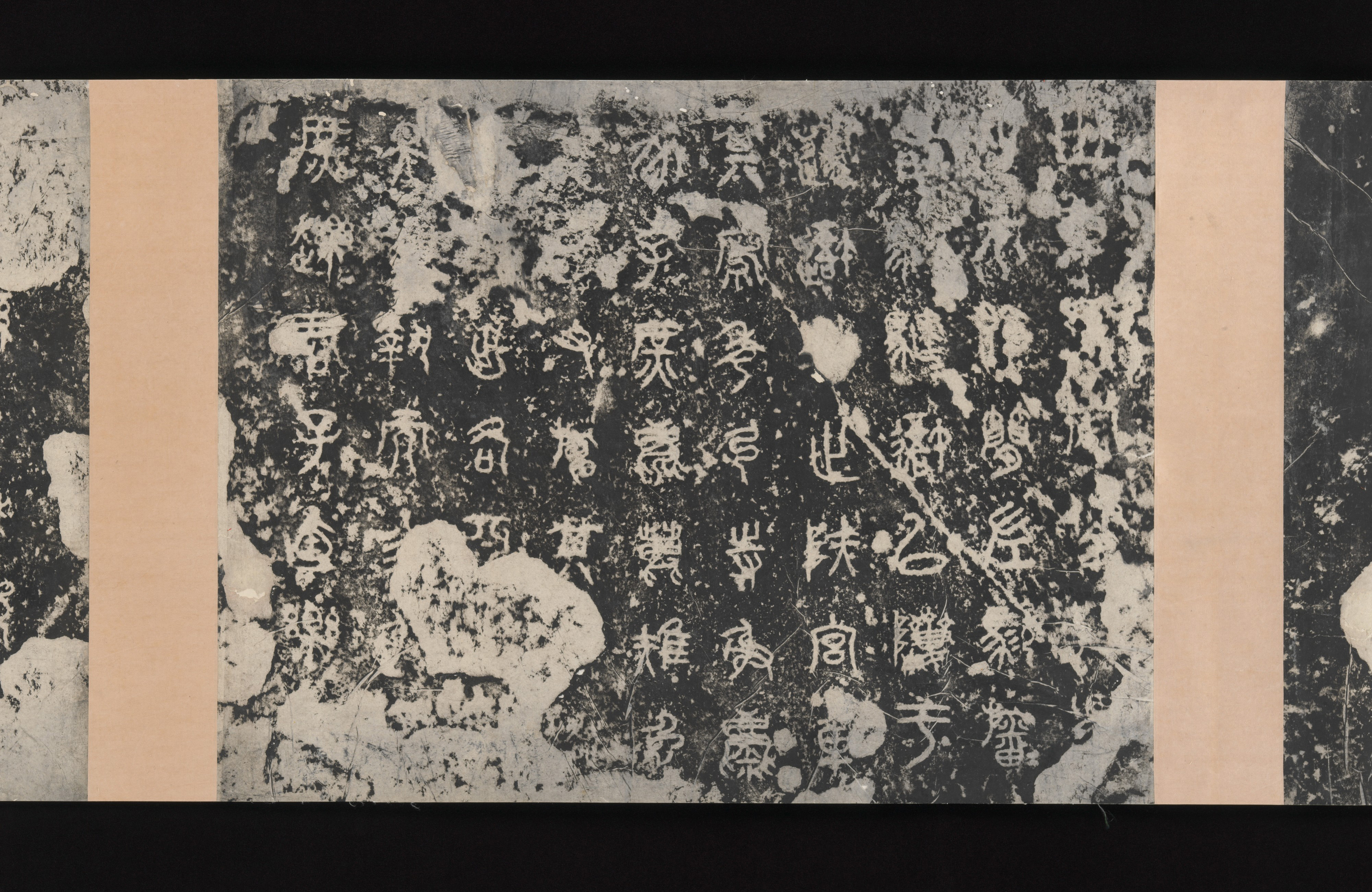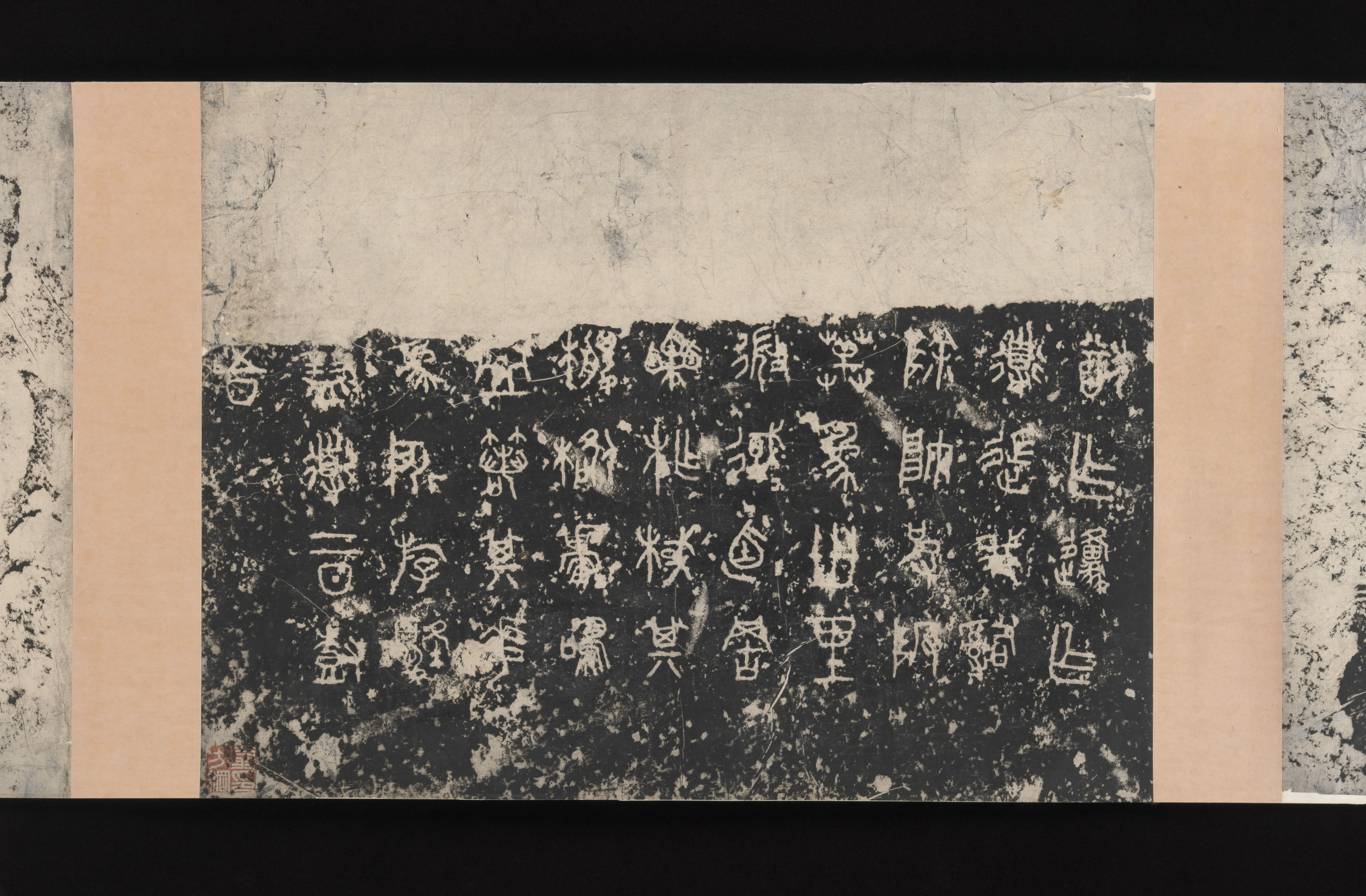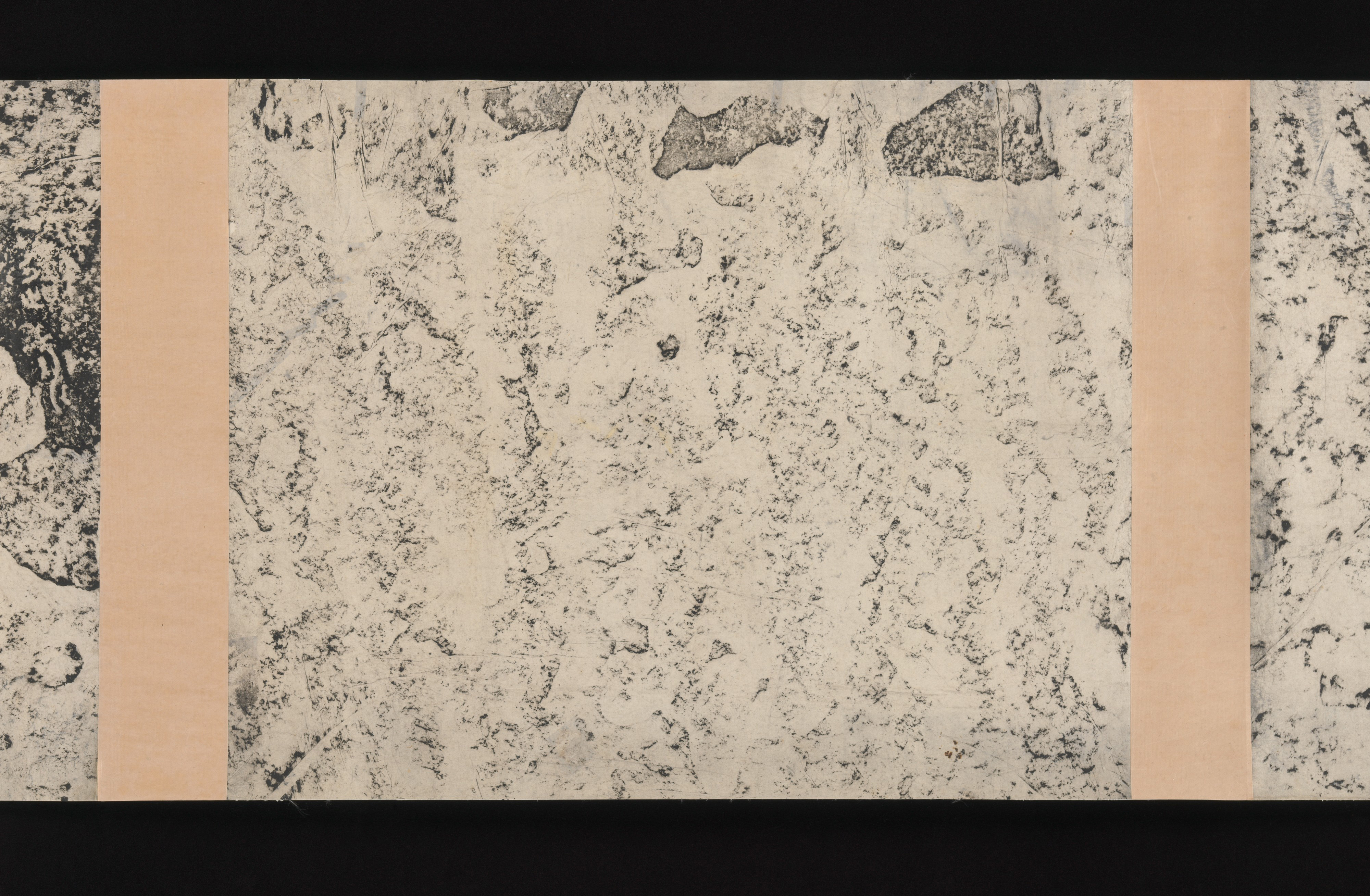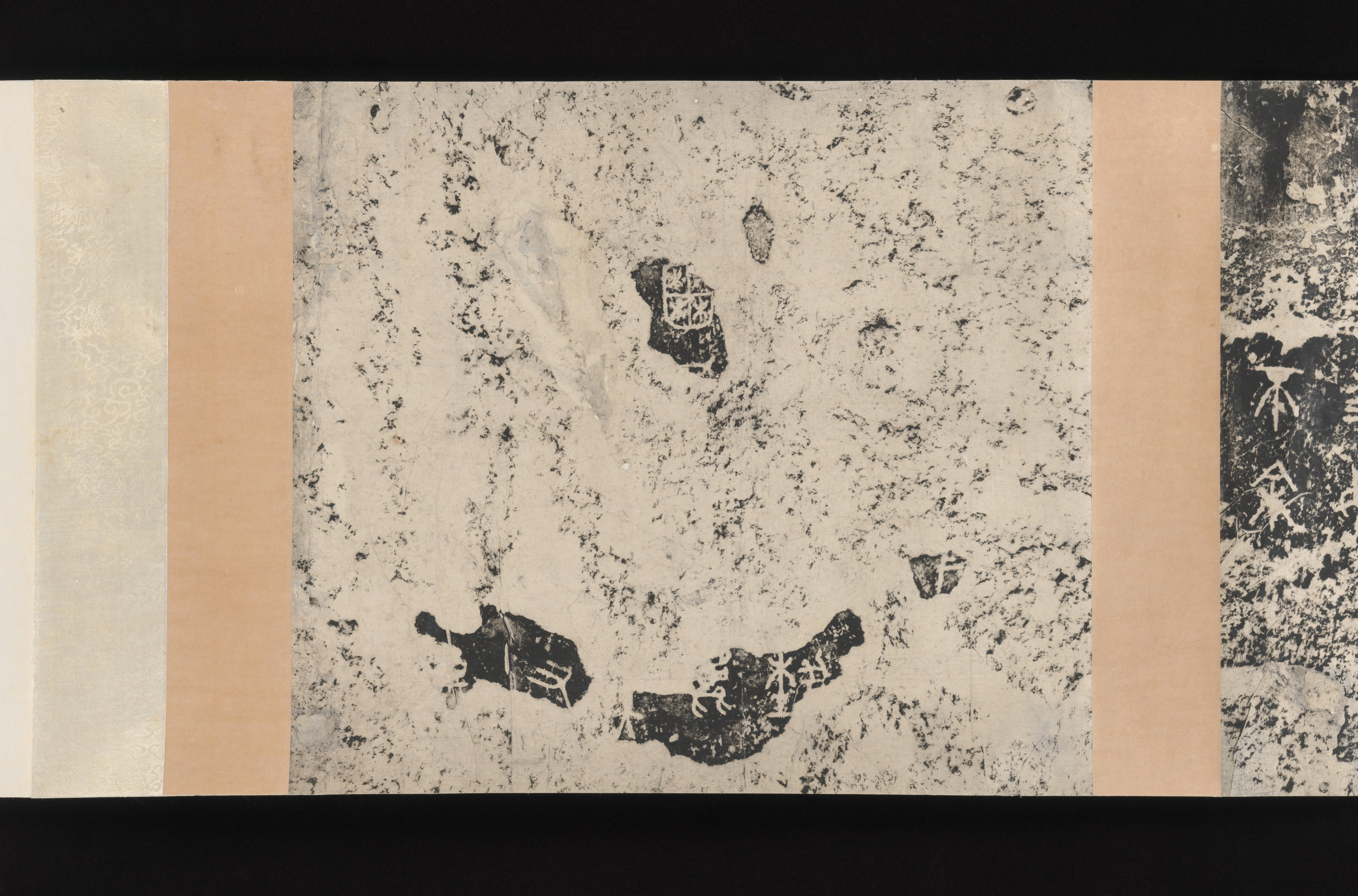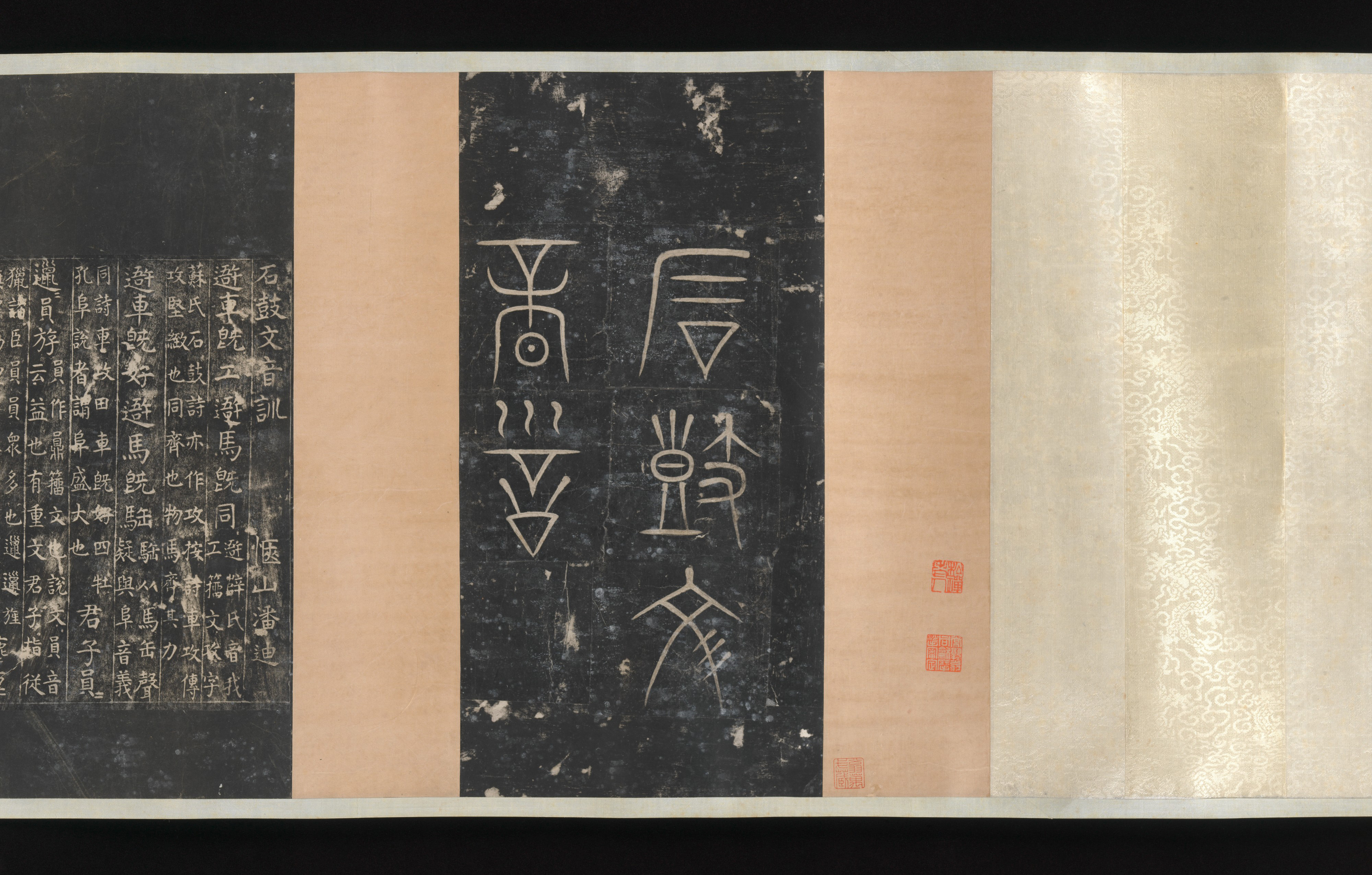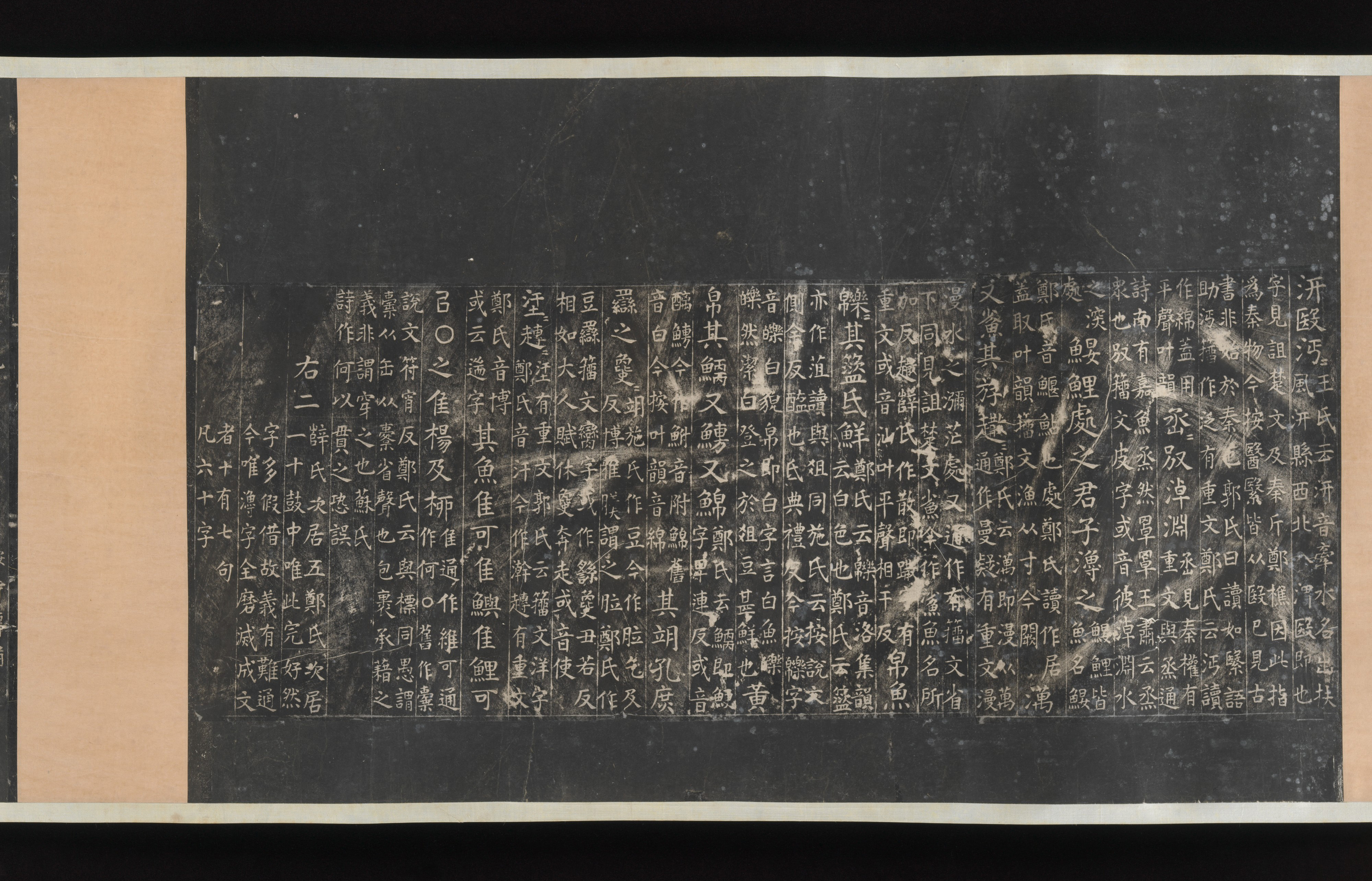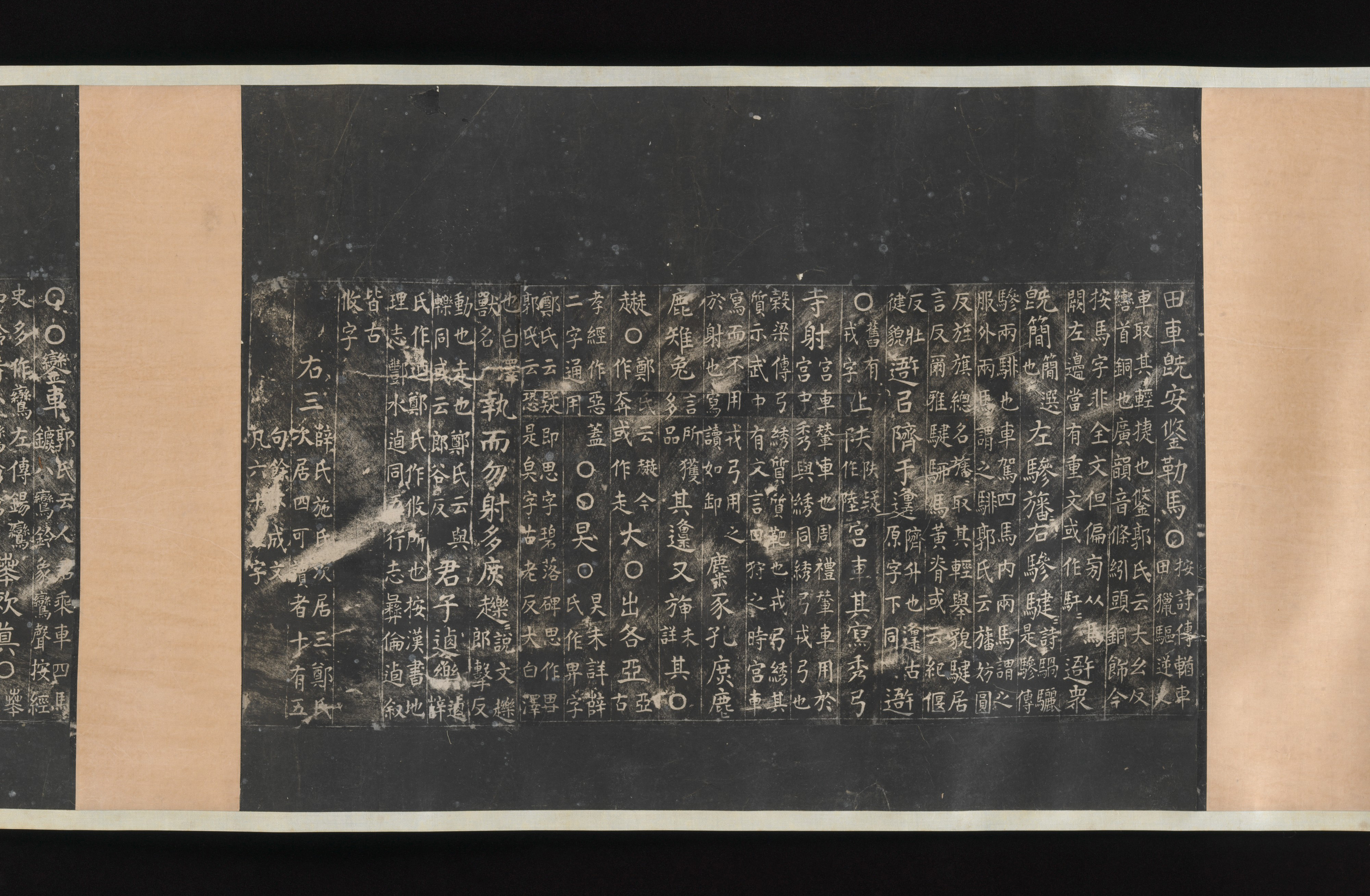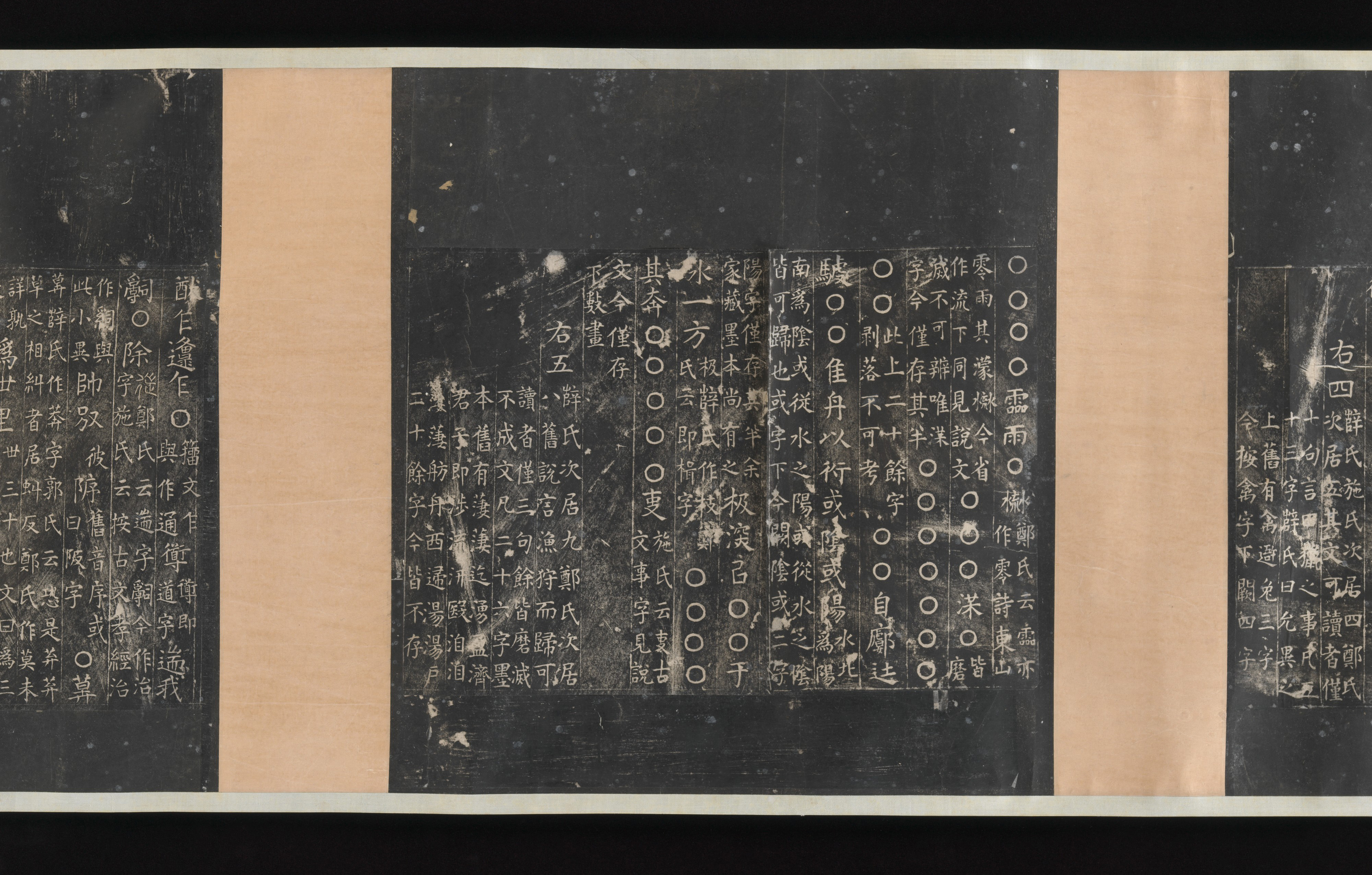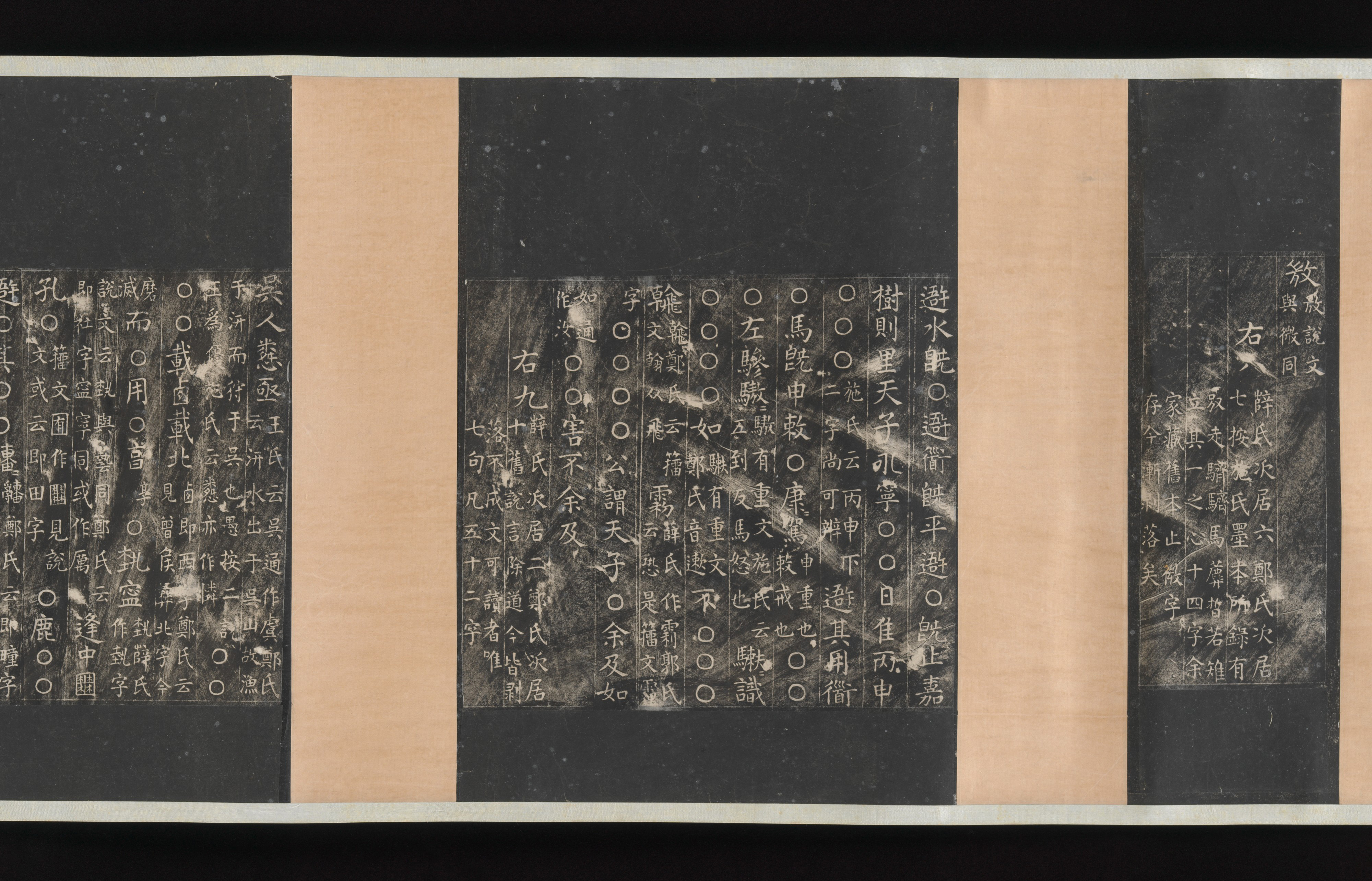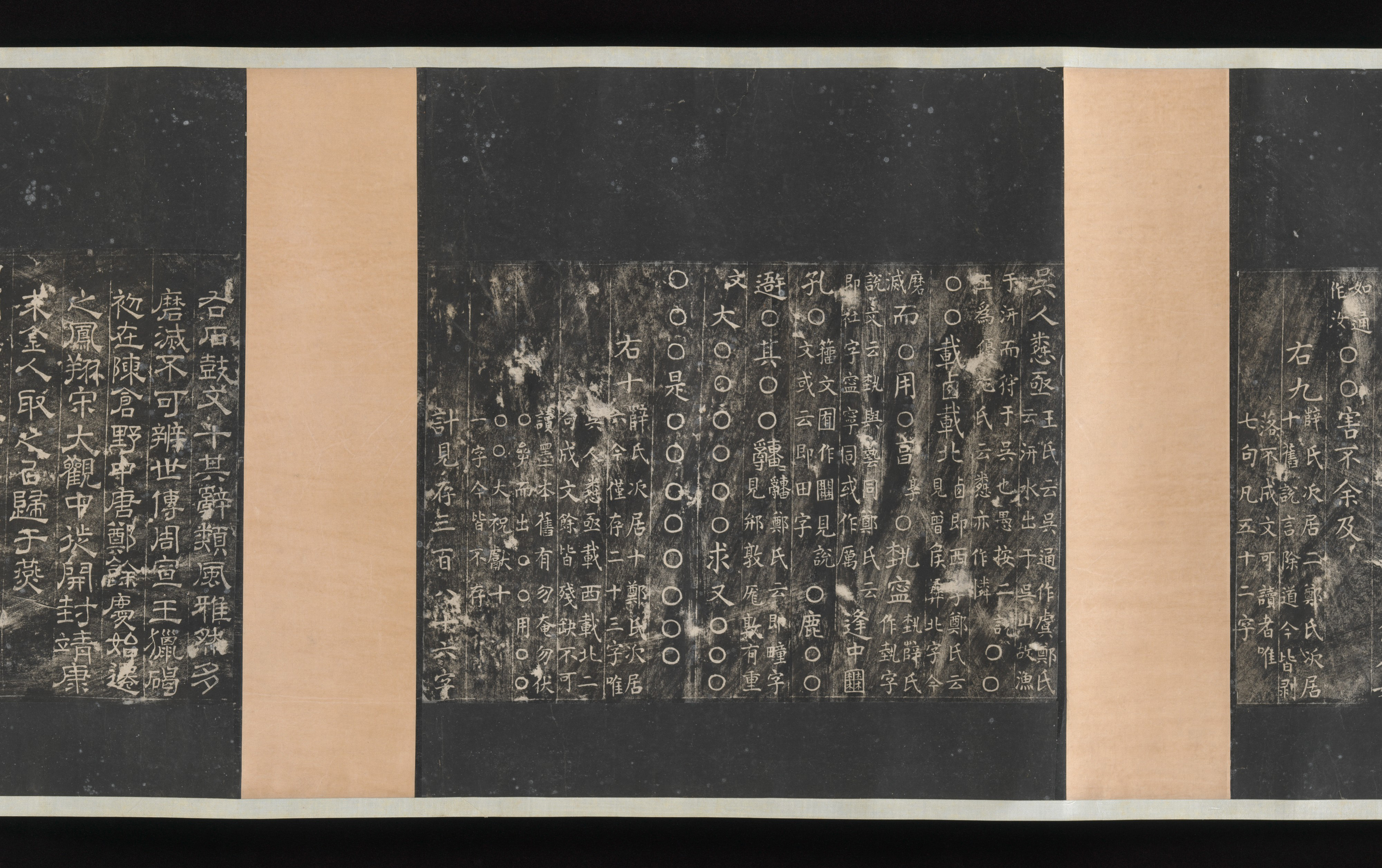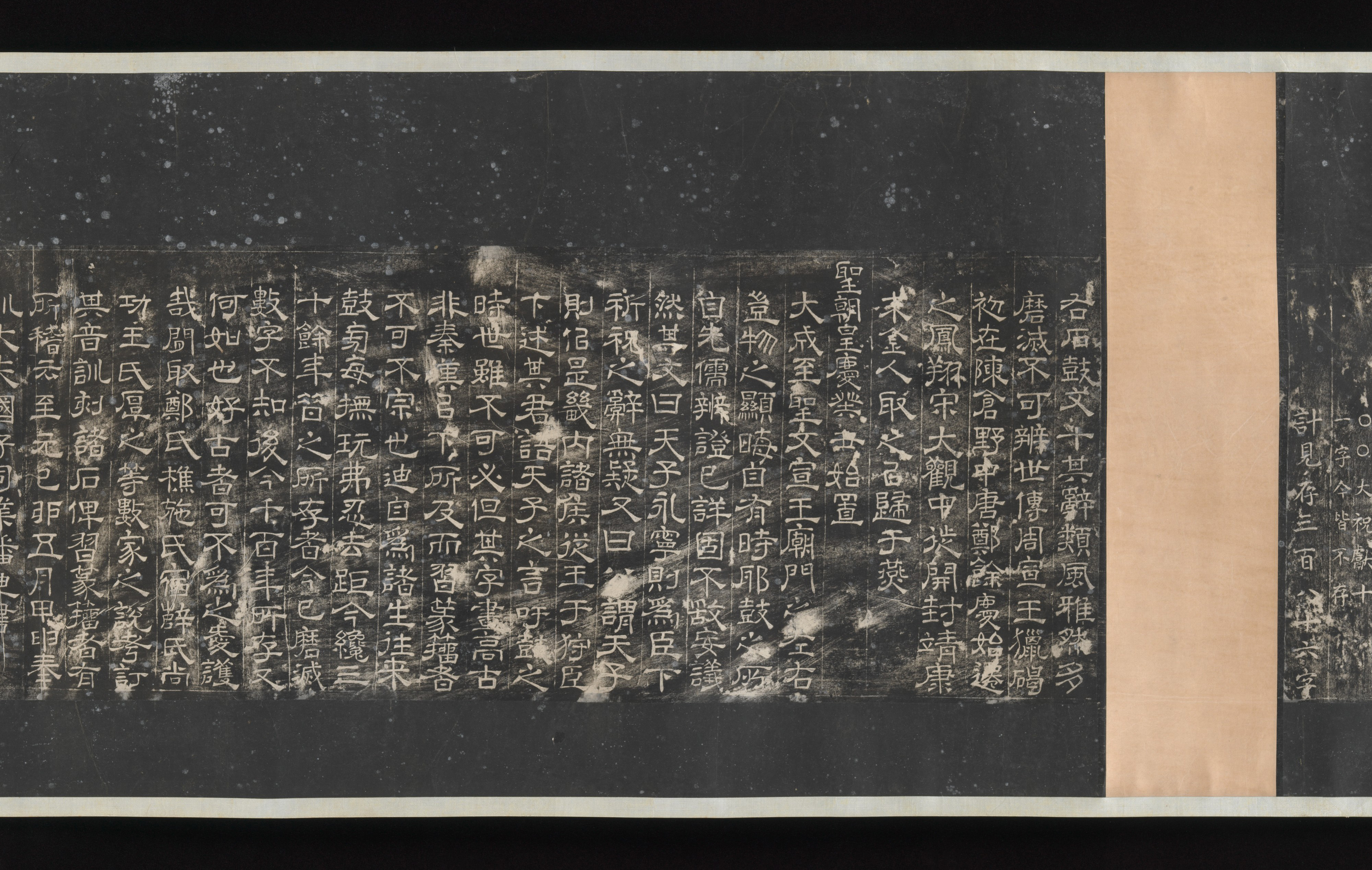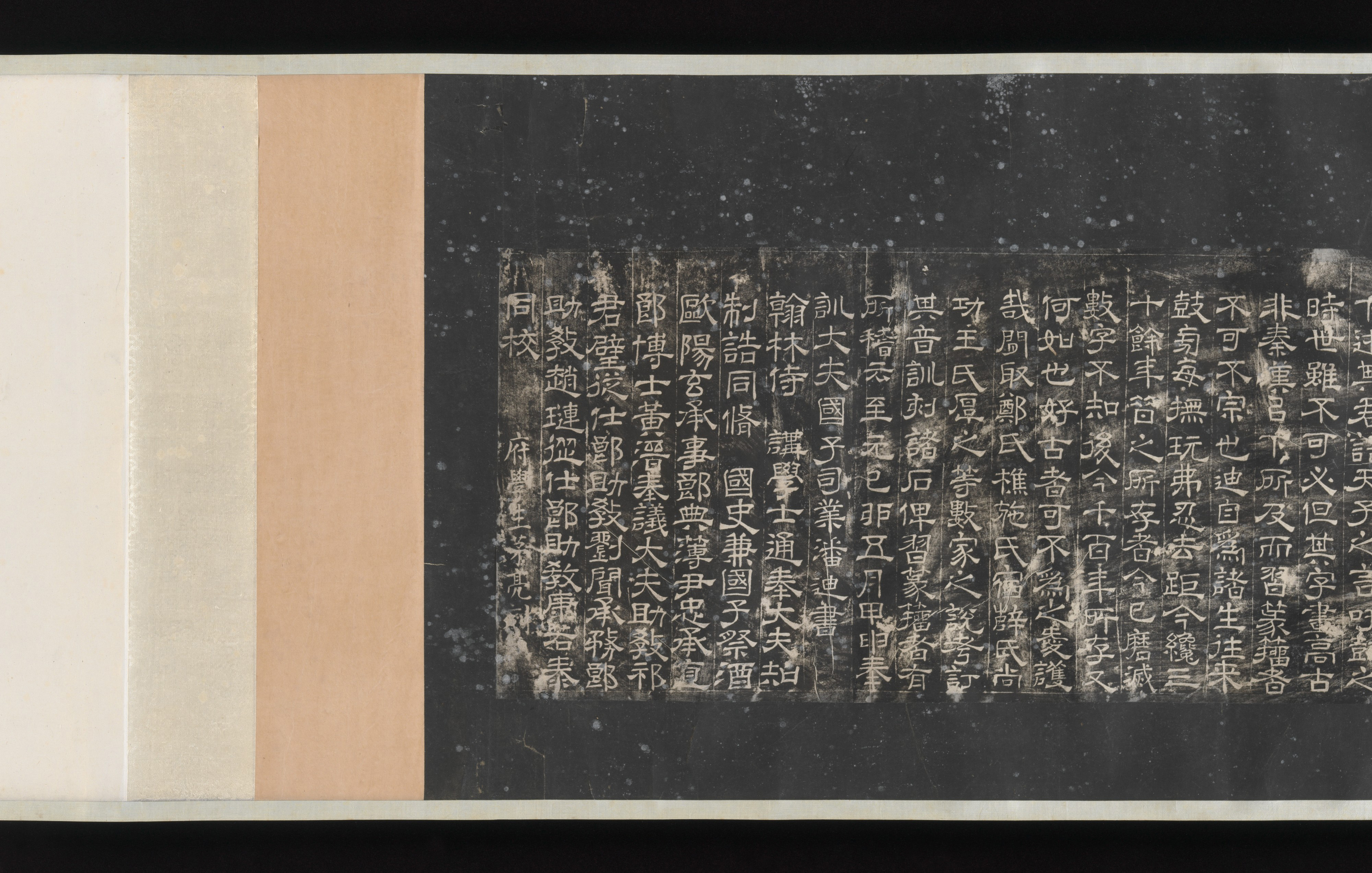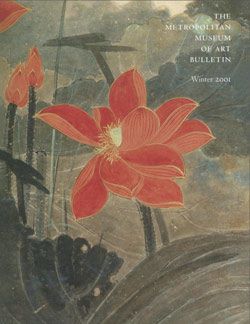Inscriptions on the Stone Drums (Eastern Zhou dynasty, 5th century BCE)
Not on view
Written Chinese evolved slowly over more than two millennia before arriving at a modern, "regular" script (kai shu) in the third century A.D. The oldest script type, known as "seal" script (zhuan shu), developed gradually during the Shang, Zhou, and Qin periods (ca. 1500–206 B.C.) and is characterized by curvilinear picturelike forms executed in strokes of even thickness.
Inscriptions on the Ten Stone Drums, which record royal hunting expeditions, were probably engraved by one of the early dukes of the Qin state and constitute the earliest monumental seal-script texts of any length to survive. The script represents a transitional style between the "large-seal" script found on Shang and Zhou bronze vessels and the standardized "small-seal" script employed in official documents of the Qin dynasty (221–206 B.C.). The drums, discovered near Baoji in Shaanxi Province in the seventh century A.D., were moved to the imperial palace in Kaifeng by Emperor Huizong (r. 1101–25). When Jurchen Jin troops captured the Song capital in 1127, the drums were moved again to Beijing, where they are now in the Palace Museum.
The tradition of making ink rubbings of stone- and wood-carved inscriptions was a precursor to printing in China and made possible the wide dissemination of calligraphic models.
#7379. Inscriptions on the Stone Drums (Eastern Zhou dynasty, 5th century B.C.)
This image cannot be enlarged, viewed at full screen, or downloaded.
This artwork is meant to be viewed from right to left. Scroll left to view more.
